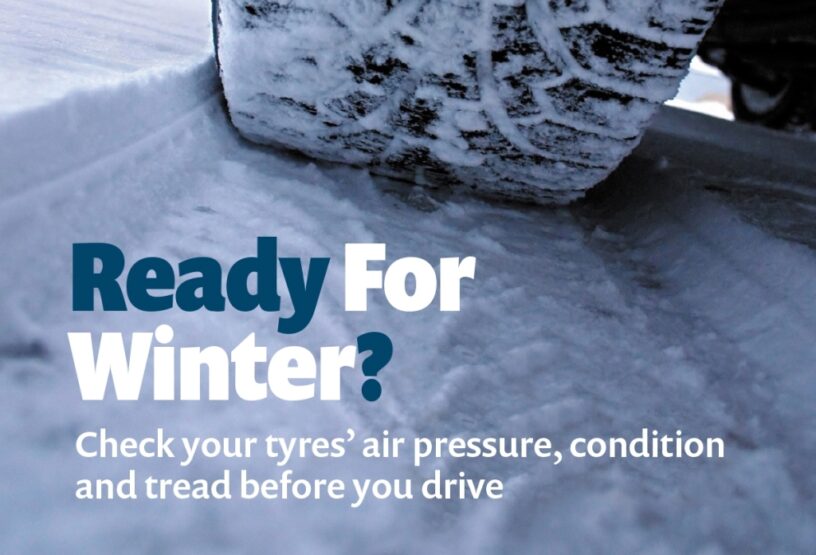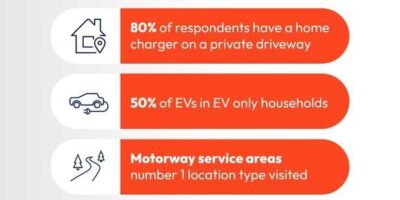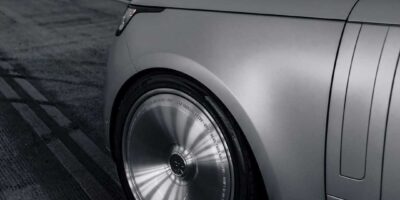With winter finally upon us and the promise of Artic conditions on the way, TyreSafe is urging drivers to check their tyres are in roadworthy condition.
Whether it’s snow, wintery showers, persistent rain or a mixture of them all that will be the dominant weather condition, adequate tread depth is going to be a primary safety requirement for all vehicles on the roads. It is the tyre’s tread that clears water from the road surface to keep a vehicle in contact with the road and provides at least some grip on snow and ice. The lower the tread depth, the lower that grip might be, especially as the tyre approaches the minimum legal limit of 1.6mm.
Driving with air pressures below the recommended settings can also significantly affect a tyre’s ability to grip. This is because an underinflated or overinflated tyre loses its shape, which in turn lowers the amount of contact it has with the road.
While expert drivers may alter tyre pressures under extreme off-road conditions, it’s dangerous to do so on a vehicle which is primarily to be driven on the roads and pressures should remain at the vehicle manufacturer’s recommended settings.
While most tyres on the road are primarily designed for summer, they are not dangerous to use in winter and, in fact, advances in technology mean they now perform better than ever before at low temperatures. However, they must be thoroughly inspected for roadworthiness and the driver must pay particular attention to road conditions and adjust their driving accordingly.
Winter tyres are the optimal choice for a vehicle during prolonged periods of cold weather. Even at extremely low temperatures, their rubber stays supple and, combined with an increased number of ‘sipes’ or grooves in the tread, they provide the highest levels of grip under these conditions. As the name implies, they are not best suited to year-round driving.
All-season tyres, however, are an increasingly popular option as they provide near winter tyre performance but have the benefit of also having been designed to be driven all year-round. They also feature many more sipes than summer tyres, again increasing physical grip. However, they will not always offer the optimal performance of summer tyres in warm weather or winter tyres in the cold.
When deciding whether winter or all-season tyres are their best option, TyreSafe recommends owners consider their own driving requirements and the conditions they are likely to face.
Stuart Jackson, TyreSafe chairman, said: “Tyres are put to their ultimate test during winter and more than ever we depend on them to stay safe while driving. Regardless or whatever technological systems are fitted to the vehicle, it is only the tyres which are in contact with the road and provide the grip to turn braking, acceleration and steering adjustments into a change in speed or direction. If tyres are unroadworthy, the best driver in the world will be unable to stay in control of the vehicle in wintery conditions.
“No matter which type of tyre your vehicle is equipped with, during winter it’s essential you check they are all in good condition and you adjust your driving to the conditions.â€
Checklist: tread depth
If your tyres are below 2mm, consider whether it is worth risking waiting rather than replacing them
If you don’t have a tread depth gauge, use a 20p coin as a guide – insert the coin at three points across the tread pattern and at various point around the circumference. If you can see the border at any point, have a professional check them
The legal limit for cars, vans and all vehicles below 3.5 tons is 1.6mm; 1mm for motorcycles over 50cc. A potential £2500 fine and three penalty points can be applied on each tyre found to be below those limits
Checklist – air pressure
Are all tyres at the vehicle manufacturer’s recommended settings?
Settings can be found in the owner’s handbook, in the door shut or fuel filler cap
Download the TyreSafe Tyre Checker from the Apple Store or Google Play to help guide you and record the correct settings
Checklist – condition
Tyres should be free of lumps, bumps, cuts and cracking – if you see these, have them checked by a professional
If you slide and the tyres hit an object like a kerb, check it before your next journeys to ensure it has not been damaged, which may result in a bulge, for example
*Article Source http://www.tyresafe.org








